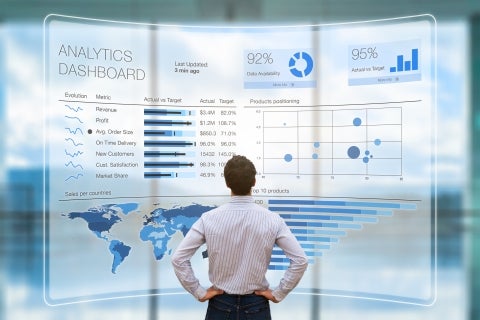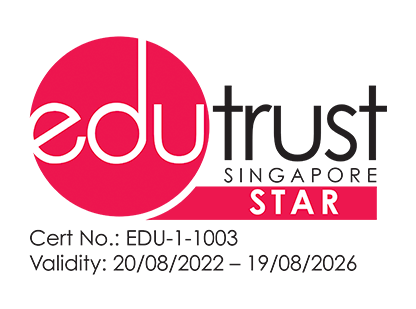How Programming Languages Can Future-Proof Your Career

In the evolving world of business and technology, digitalisation has become the backbone of every organisation. To take advantage of this global shift and utilise the digital field, companies turn to data analysts and data scientists to interpret and relay information essential to operating in a virtual sphere. These experts are now considered highly valuable and are much sought after.
According to the Emerging Jobs and Skills Report 2022 by NTUC Learning Hub, 54% of companies in Singapore are looking to hire data analysts, making this one of the top careers in the field of data science.1 But, what does it mean to be a data analyst?
What is a Data Analyst?
It is a common misconception that data scientists and data analysts are the same, as they occupy different corners of the industry. Data analytics is a field under the umbrella of data science, despite the terms “data science” and “data analytics” often being used interchangeably.
To be a data analyst is to be able to gather, sort, and streamline data to identify key insights that companies can use to make data-driven decisions. A data scientist, on the other hand, is responsible for coming up with ways to visualise, communicate and sometimes generate or gather data.
Apart from being able to interpret data, a data analyst must understand the fundamentals of programming language, such as Python, to truly stand out. At the Singapore Institute of Management (SIM), our Graduate Certificate in Analytics (E-Learning) programme offers Principles of Programming (Python) as an elective module to ensure students are given the opportunity to master industry-standard programming language.

Essential Programming Languages
A programming language is used to write instructions for a computer to execute, using a sequence of commands to specify how it should solve a problem.2
To do this, data scientists and data analysts use one or more of the following programming languages:
R
When it comes to data science, R is one of the main programming language used because it is easy to learn and understand.3 With this comprehensive programming language, data analysts are able to spot trends and patterns in data sets that can be manipulated into visualisations for better comprehension of data insights.
Data analysts often opt to use this programming language because it provides statistical packages for quantitative applications. By learning the R programming language, you’ll be able to create eye-catching and interactive websites that allow users to interact with results and data, paving the way for more comprehensive reports.
Python
Python is a popular programming language because of its simplicity, making it ideal for novice programmers to pick up. It’s a general-purpose programming language with a focus on readability, maintainability, and usability. In fact, it is one of the top programming languages because it’s available in many libraries for data analysis and machine learning, and is compatible with a majority of operating systems.4
When you’re able to code with Python, you increase your chances of employability as this programming language can be used for small and complex tasks. With this versatile programming language, you’ll have the opportunity to apply for positions in well-known international companies, such as Netflix, Spotify, and Facebook. Spotify uses Python for its backend services and data analysis.5
Java
Similar to Python, Java is a general-purpose programming language that is predominantly used to create apps for Windows, Mac OS, Android, and iOS. Given its nature of being platform-independent, you don’t need special hardware or software to create your app.
According to the 2022 Developer Survey by Stack Overflow, 65.3% of professional developers and novice programmers prefer Javascript over other coding languages.6 As a data analyst with the ability to code in Java, you’ll be able to effortlessly switch between platforms as Java is a versatile programming language that enhances your value to employers.
Structured Query Language (SQL)
SQL is a programming language that is used to query or gather data from a relational database. It is mostly used for simple data manipulation, and filtering data in rows and columns with specific functions.7
Data analysts use SQL because it simplifies dealing with huge data sets and sources optimal solutions. With SQL, data analysts don’t have to transfer data from one application to another. Instead, they have a holistic view of the data collected and can run queries to organise these data sets.

Why Do Data Analysts Need Programming Skills?
Prior to the emergence of big data, data analysts could easily manage data-related tasks. But with increasingly complex data sets to sort through, data analysts must be able to use programming languages as and when required. This gives them a better understanding of the data collected, and they can improve their efficiency and productivity by developing algorithms that can analyse and process data at a faster pace.
To be a data analyst, you must have sound mathematical and statistical skills in order to accurately interpret data. On top of that, equipping yourself with programming skills can boost your employability as most employers seek those with strong programming skills. In 2022, CodingDojo, a developer training platform, found that there are over 60,000 job postings that require applicants to be able to code with Java and Python.8 As such, programming skills have become a must-have in the evolving technology landscape.
Some additional skills data analysts should develop are:
1. Data visualisation
As a data analyst, it is your responsibility to interpret data and present your findings to higher management in an easily digestible and accurate manner. One way to do this is through data visualisation, a skill in which you learn to transform information into graphical representations that are easy to understand and can be used to make data-driven decisions.
2. Predictive analytics
Having the ability to conduct predictive analytics lets you inform business owners of risks and opportunities in the market, and identify areas of improvement when it comes to business strategies or marketing campaigns. Through predictive analytics, you can be involved in business planning as this skill allows you to forecast outcomes that will either benefit the organisation or plummet it.
3. Data ethics
Collecting data and analysing it for the purpose of improving products and services must be done diligently to ensure that guidelines, laws, and regulations are adhered to at all times. As such, data analysts must ensure that businesses are transparent about their data collection and analysis methods to prevent privacy issues. Data analysts must be aware of the ethical concerns surrounding data mining as one false move could result in a boycott of the business.
Become a Programming Master
At SIM E-Learning, you can gain fundamental knowledge of programming, data analytics tools, and data visualisation techniques to guide your future career. Enrol in our Graduate Certificate in Analytics (E-Learning) programme to develop the skills you need to be at the forefront of decision-making in an increasingly information-driven, digitalised world.
Get in touch with our Student Advisors to register today!
References
1 https://www.ntuclearninghub.com/emerging-jobs-and-skills-2022
2 https://www.britannica.com/technology/computer-programming-language
3 https://www.coursera.org/articles/python-or-r-for-data-analysis
4 https://www.techrepublic.com/article/python-lead-ieee-programming-language/
5 https://engineering.atspotify.com/2013/03/how-we-use-python-at-spotify/
6 https://survey.stackoverflow.co/2022/#most-popular-technologies-language
7 https://towardsdatascience.com/10-most-important-sql-commands-every-data-analyst-needs-to-know-f0f568914b98
8 https://www.codingdojo.com/blog/top-programming-languages





